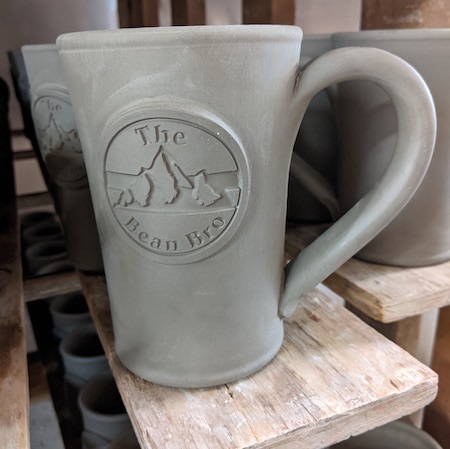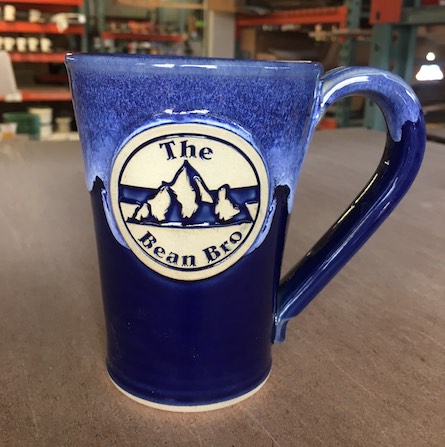It’s difficult to say precisely what makes a piece of ceramic pottery, a stoneware mug, a bowl, or an objet d’art something special. Certainly, the artist’s talent in rendering a figure or a vessel in clay that appeals to the eye is paramount, but ceramic glaze undoubtedly has a lot to do with how we perceive ceramics like stoneware.
Glaze has been a part of ceramic arts for a long part of the history of using clay to make objects. Still, several advances in ceramics have enabled our modern use, and love of ceramics and glazing is one crucial element.
Historical Developments in Ceramics
The history of ceramics is long and began to take shape as soon as people discovered the useful properties of clay deposits in the soil. The first item of recovered ceramic dates back to 28,000 BCE. The item is a figure of a woman and was discovered in what is now the Czech Republic.
The wheel was invented for throwing pottery much later—around 3,500 BCE—and this enabled the creation of more uniform and utilitarian shapes such as jars and bottles. Pottery was still unglazed at this point, which meant it was porous and much less durable than what we know of as stoneware today.
As people began to build more sophisticated ovens and kilns to bake or fire their clay pieces, some glazing occurred naturally as compounds in the clay or the fuel reacted in the heat. As late as 3,000 BCE, glazed pottery was being used in Mesopotamia and has been discovered there.
As people were able to create the conditions to fire pottery at hotter and higher temperatures, they were able to use glaze that would make a piece of ceramic vitreous. Which is to say the glaze will seal the pottery, make it stain resistant, and, depending on the glaze, food-safe as well.

What Is Glaze?
Glaze is very technically a silica (glass), a flux, which is a melting agent, and a refractory – a heat resistant material to add stability and strength. When you glaze a piece of pottery, it’s much like covering it in a layer of glass. The pottery and the glaze fuse together in the high temperature of a kiln firing.
Once the basics of glazing pottery were understood, pottery became much more useful for food storage, building materials such as tiles and bricks, and decorating art objects. Then, of course, people began to develop and experiment with glazes that could create different colors or levels of transparency on their pottery.
Glaze undergoes a chemical process in the heat of a kiln, so what you apply to the pottery initially might not be what you see when you remove the ceramic item from the kiln at the end. Some glaze is opaque, some transparent, and you can achieve every level of transparency in between. Some glaze will stay basically where you put it before you fire, and some will run or drip.
How Can Glaze Enhance Stoneware?
The use of glaze turns your beautiful stoneware beer stein into a food safe, incredibly durable way to enjoy your pilsner. But at Grey Fox Pottery, we go beyond the basics of stoneware. We create custom stoneware mugs and steins that make full use of such a wide range of glaze colors and combinations that you can create nearly anything you want that reflects your brewery, your coffee shop, or your merchandise assortment.

Make Our Stoneware Your Own
When you work with Grey Fox Pottery to create custom mugs or steins for your business, our artists work with you to create a clay logo medallion using the scrimshaw process. The badge and logo will become part of the stoneware and won’t chip away or peel with use or washes. Send us your art to see a digital rendering of your logo on a stoneware mug clay medallion.
We offer so many glaze choices and combinations—from a perfect St. Patrick’s Day emerald to cool and minimal black on black—that you’re sure to find the glaze type and color to express your brand’s personality via stoneware.
In fact, the glaze choices coupled with the small order quantity at Grey Fox Pottery means you can feel free to create a different run of custom stoneware coffee mugs or steins for various events at your brewery or shop. Offer an exclusive style that riffs on your logo to mug club members for a sense of exclusivity. Commission a run of custom stoneware steins to commemorate a new seasonal brew or the retirement of a classic.
Reach Out to Inquire About a Custom Mug or Stein
Contact us today to find out more about how to make custom stoneware part of your merchandise line and increase customer enthusiasm about your brand. Custom merchandise that puts your logo in the hands of your most loyal fans turns those fans into your best marketing asset.
